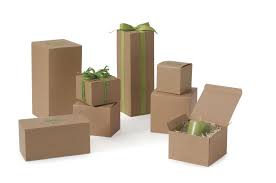Introduction
The global push towards sustainability has spurred innovation across industries, and packaging is no exception. As concerns about environmental impact rise, businesses are seeking innovative and sustainable packaging solutions to reduce their carbon footprint. This article explores cutting-edge innovations in sustainable packaging, highlighting eco-friendly alternatives that are transforming the way products are packaged and delivered.
Bioplastics
Traditional plastics contribute significantly to environmental pollution. Bioplastics, derived from renewable resources such as cornstarch, sugarcane, or algae, present a sustainable alternative. These materials break down more easily than conventional plastics, reducing the long-term environmental impact.
Mushroom Packaging
Mushroom packaging, or mycelium packaging, utilizes the root structure of mushrooms to create a biodegradable and compostable alternative. This innovative material is not only sustainable but also provides protective packaging that can be customized to fit various shapes.
Recyclable Plastics
While traditional plastics persist in the environment, recyclable plastics offer a more sustainable option. These materials can be collected, processed, and reused, diverting plastic waste from landfills. Innovations in recyclable plastics continue to improve their properties, making them more versatile and appealing to businesses.
Post-Consumer Recycled Content
Packaging made from post-consumer recycled content utilizes materials that have already been used and recycled. This not only reduces the demand for virgin materials but also helps close the recycling loop. Brands adopting post-consumer recycled content contribute to a circular economy and showcase a commitment to sustainability.
Edible Films and Coatings
Edible packaging takes sustainability to a whole new level by providing packaging that can be consumed along with the product. Edible films and coatings, often made from natural ingredients like seaweed or starch, offer a novel solution to reduce waste and provide a unique consumer experience.
Water-Soluble Packaging
Water-soluble packaging dissolves upon contact with water, eliminating the need for disposal. This innovation is particularly useful for single-use items like beverage pods and condiment packaging. Water-soluble materials reduce the environmental impact of packaging waste, offering a convenient and eco-friendly option.
Source Reduction Techniques
Source reduction focuses on minimizing the amount of packaging used without compromising product safety. This includes lightweighting materials, optimizing package shapes, and adopting minimalist design principles. Brands are increasingly recognizing the appeal of simplicity, reducing excess packaging and embracing a more environmentally conscious approach.
Flexible Packaging
Flexible packaging, such as pouches and sachets, requires less material compared to traditional rigid packaging. The lightweight and space-efficient nature of flexible packaging reduces transportation-related carbon emissions. Additionally, innovations in barrier coatings enhance the recyclability of these materials.
RFID Technology for Supply Chain Efficiency
Smart packaging technologies, like Radio-Frequency Identification (RFID), enhance supply chain efficiency and reduce waste. RFID tags provide real-time tracking information, helping businesses optimize inventory management and reduce overstock and understock situations. This technology minimizes the environmental impact associated with inefficient supply chain practices.
Augmented Reality (AR) Packaging
AR packaging adds a layer of digital information to physical packaging, creating engaging and interactive experiences for consumers. This technology can be leveraged to communicate sustainability initiatives, educate consumers on proper disposal methods, and highlight the eco-friendly aspects of the packaging.
Conclusion
Innovations in sustainable packaging solutions are reshaping the industry, offering environmentally friendly alternatives to traditional packaging materials. From biodegradable and recyclable materials to edible packaging and minimalist design principles, businesses have a growing array of options to reduce their environmental impact. Embracing these innovations not only aligns with consumer preferences for eco-conscious practices but also contributes to a more sustainable and resilient future. As businesses continue to prioritize sustainability, the evolution of packaging solutions will play a pivotal role in shaping a greener and more environmentally friendly consumer landscape.
